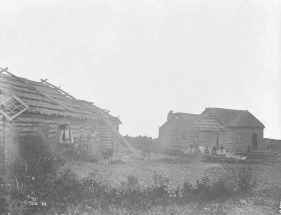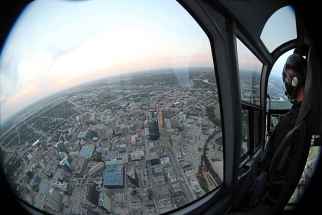Data required for WPS helicopter pitch
Read this article for free:
or
Already have an account? Log in here »
To continue reading, please subscribe:
Monthly Digital Subscription
$0 for the first 4 weeks*
- Enjoy unlimited reading on winnipegfreepress.com
- Read the E-Edition, our digital replica newspaper
- Access News Break, our award-winning app
- Play interactive puzzles
*No charge for 4 weeks then price increases to the regular rate of $19.00 plus GST every four weeks. Offer available to new and qualified returning subscribers only. Cancel any time.
Monthly Digital Subscription
$4.75/week*
- Enjoy unlimited reading on winnipegfreepress.com
- Read the E-Edition, our digital replica newspaper
- Access News Break, our award-winning app
- Play interactive puzzles
*Billed as $19 plus GST every four weeks. Cancel any time.
To continue reading, please subscribe:
Add Free Press access to your Brandon Sun subscription for only an additional
$1 for the first 4 weeks*
*Your next subscription payment will increase by $1.00 and you will be charged $16.99 plus GST for four weeks. After four weeks, your payment will increase to $23.99 plus GST every four weeks.
Read unlimited articles for free today:
or
Already have an account? Log in here »
Hey there, time traveller!
This article was published 26/07/2019 (2333 days ago), so information in it may no longer be current.
The essential question for having a police helicopter is: how much bang are we getting for our buck?
Quite a lot, according to the Winnipeg Police Service, which argues Air-1 has had a real impact on policing in the city. The WPS publishes annual reports on the operations of Air-1 and the Flight Operations Unit (FOU), and to bolster its case, the WPS commissioned a report to show the benefits of the FOU.
The report, prepared by the consulting firm MNP (LLP) at a cost of $132,000, is based on interviews with police as well as surveys conducted with citizens and WPS members. The report also reviewed a sample of FOU videos, covering 13 different events.

The intended uses of the police helicopter include supporting investigations, operations such as infrared searches and co-ordination of ground response, searching for missing persons, rapid deployment of canine units and illumination of crime scenes, collisions, disturbances and foot pursuits.
Asking Winnipeggers what they think of the police helicopter isn’t particularly relevant except as a public relations move, although such a survey might help to support a police rationale for keeping the FOU if it were compared to a similar survey of Winnipeggers prior to the WPS creating the unit.
And while nuanced answers from informed stakeholders — such as the officers and support staff for the FOU — can provide context for discussion of the unit’s effectiveness in fighting crime, they aren’t a substitute for actual data.
The initial purchase cost of the helicopter in 2010 was $3.5 million, and the hourly costs of operating it were $2,600 in 2016. And while operating costs were initially covered by the province, the Pallister government capped its support at $1.7 million annually before discontinuing the arrangement, leaving the WPS to shoulder the cost.
It’s a steep price for a police service already challenged by a multi-faceted problem such as the meth crisis, which health care, social services and other agencies must help address. So the question then becomes: is the helicopter effective?
Among MNP’s findings:
● Ninety-nine (99) per cent of the public online respondents and ninety-two (92) per cent of the telephone survey respondents expressed awareness that the WPS was operating a helicopter.
● Sixty-six (66) per cent of the online survey respondents and eighty-one (81) per cent of the telephone survey respondents expressed support for the use of the helicopter.
● Ninety-nine (99) per cent of the public online respondents and ninety-two (92) per cent of the telephone survey respondents expressed awareness that the WPS was operating a helicopter.
● Sixty-six (66) per cent of the online survey respondents and eighty-one (81) per cent of the telephone survey respondents expressed support for the use of the helicopter.
● Sixty (60) per cent of the online respondents and seventy-five (75) per cent of the telephone survey respondents agreed that the helicopter is an efficient use of WPS funding.
● Sixty-three (63) per cent of the online respondents and seventy-six (76) per cent of the telephone survey respondents believe the helicopter is worth it because of the benefits it provides.
● Eighty-four (84) per cent of WPS members either agreed or strongly agreed the costs of the unit are justified by the benefits.
● Seventy-five (75) per cent of sworn officers believe the use of the helicopter reduced their personal safety risk and eighty-eight (88) per cent believe it increased other officers’ safety.
● Fifty-six (56) per cent of online respondents agreed that the police helicopter helped with neighbourhood policing. while, fifty-six (56) per cent agreed that the police helicopter improved their sense of security and safety.
● Sixty-five (65) per cent of telephone survey respondents agreed that the helicopter helped with neighborhood policing; while seventy-three (73) per cent of telephone survey respondents agreed that the police helicopter improved their sense of security and safety.
● Thirty-one (31) per cent and twenty-one (21) per cent of online respondents agreed or strongly agreed that they were disturbed by the noise and light of the police helicopter respectively.
● Six (6) per cent and thirteen (13) per cent of telephone respondents either agreed or strongly agreed that they were disturbed by the noise and light of the police helicopter. Finally,
● Thirty-three (33) per cent of online respondents and twenty-one (21) per cent of telephone respondents either agreed or strongly agreed that the police helicopter causes concern when in the area.
● Eighty-two (82) per cent of the WPS survey respondents agree that the FOU improves the operational efficiency of the Service.
There, the data is lacking. The MNP report found the copter’s role in conducting or assisting police work, such as how often it was used to find missing persons, was not fully quantified by the WPS. Information about the number of times the FOU attended a missing persons call was quantified, but not whether this resulted in the person being found.
Some of this kind of data can be found in the WPS’s own reports on the FOU, such as in 2011 when Air-1 was used to deal with complaints of people shining lasers at aircraft over Winnipeg. The incidents, the manner in which Air-1 was used and the results (how many suspects, if any, were apprehended) are delineated. However, that type of detailed informational breakdown is rare, and the 2011 report instead provided highlights of specific incidents. This was also the case in subsequent reports from the WPS.
MNP’s report points out this lack of data from the WPS: “Intuitively and anecdotally, the use of Air-1 is a time and resource saver, but the WPS does not, consistently and in an easily retrievable fashion, collect and analyze the data to quantitively prove it.”
To make the case for the continued use of Air-1, the WPS needs to provide this type of information.
It might also support the suggestion — put forward in the MNP report — that a second WPS helicopter is needed. But in the absence of a full statistical analysis rather than anecdotal evidence, that recommendation just won’t fly.











